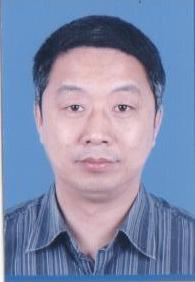
夏建荣
博士,教授(三级),博士生导师
环境科学与工程学院
广州大学
广州大学城外环西路230号,510006
E-mail:jrxia@gzhu.edu.cn
广东省高等学校“千百十工程”省级培养对象,曾任环境科学与工程学院副院长(2011-2020)。主持承担国家自然科学基金面上项目4项,广东省高等学校高层次人才项目、广东省自然科学基金、广东省科技计划项目、广州市科技计划项目等10余项。发表论文80余篇,其中SCI论文50余篇;参与编写出版专著2部;获广东省科技进步二等奖1项(排名第三)。已联合培养指导博士研究生1名、硕士研究生22名。
欢迎具有生物学、环境科学、环境工程以及相关专业背景的同学报考博士(生物学)和硕士(环境科学、环境工程、资源与环境)研究生。
教育背景
2001年中国科学院水生生物研究所水生生物学专业博士学位
1996年中国科学院水生生物研究所水生生物学专业硕士学位
1991年杭州师范学院生物学专业学士学位;
工作经历
1996年-2007年11月,汕头大学海洋生物广东省重点实验室,2006年12月被评为教授;
2007年12月至今广州大学环境科学与工程学院教授
研究方向
一、海洋浮游植物对全球变化的响应
二、藻类生物材料及其在污水处理中的应用
三、食用蓝藻规模化培养技术及其生产应用
主要科研项目
[1] 国家自然科学基金项目(No.42076109),海洋硅藻CO2浓缩机制与Rubisco对大气CO2浓度升高和海洋升温的响应及其机制研究,2021.1-2024.12,58万, 主持
[2] 国家自然科学基金项目(No.41376156),海藻硅藻高效固碳的酶促协同机制研究,2014.1-2017.12,85万,主持
[3] 国家自然科学基金项目(No.40976078),海洋浮游硅藻碳酸酐酶的环境调控机制研究,2010.1-2012.12. 45万,主持
[4] 国家自然科学基金项目(No.40676079),海藻硅藻碳酸酐酶的诱导、定位及其性质研究, 2007.1-2009.12,33万,主持
[5] 广东省高等学校高层次人才项目,海洋硅藻高效固碳的酶促协同作用对环境的响应机制。2013.1-2016.12, 25万,主持
[6] 广东省自然科学基金项目,海洋浮游硅藻碳酸酐酶与Rubisco的协同作用研究, 2012.10-2014.9,5万,主持
[7] 广东省自然科学基金项目,海洋赤潮硅藻碳酸酐酶基因克隆及其转录水平调控研究,2010.10-2012.9,5万,主持
[8] 广州市科技计划项目,海藻生物吸附剂对重金属镍的吸附机制及其在电镀废水处理中的应用. 2015.1-2017.12, 20万,主持
[9] 广东省科技计划项目,大型海藻红毛菜的栽培及其开发利用研究,2006.10-2008.9, 10万元,主持
[10] 广东省自然科学基金博士启动项目,大气CO2浓度升高对海洋浮游植物的影响及其机制,2004.10-2006.9,2万元,主持
近5年代表性论文(*通讯作者)
[1] Peng Jin, Yan Ji, Quanting Huang, Peiyuan Li, Jinmei Pan, Hua Lu, Zhe Liang, Yingyan Guo, Jiahui Zhong, John Beardall, Jianrong Xia* (2021). A reduction in metabolism explains the trade-offs associated with the long-term adaptation of phytoplankton to high CO2 concentrations. New Phytologist. https://doi.org/10.1111/nph.17917
[2] Peng Jin, Jiaofeng Wan, Jiale Zhang, Sebastian Overmans, Mengting Xiao, Mengcheng Ye, Xiaoying Dai, Jingyuan Zhao, Kunshan Gao, Jianrong Xia* (2021). Additive impacts of ocean acidification and ambient ultraviolet radiation threaten calcifying marine primary producers. Science of the Total Environment. https://doi.org/10.1016/j.scitotenv. 2021.151782.
[3] Peng Jin, Zhe Liang, Hua Lu, Jinmei Pan, Peiyuan Li, Quanting Huang, Yingyan Guo, Jiahui Zhong, Futian Li, Jiaofeng Wan, Sebastian Overmans and Jianrong Xia* (2021). Lipid remodeling reveals the adaptations of a marine diatom to ocean acidification. Frontier in Microbiology. doi: 10.3389/fmicb.2021.748445
[4] Peng Jin, Jiale Zhang, Jiaofeng Wan, Sebastian Overmans, Guang Gao, Mengcheng Ye, Xiaoying Dai, Jingyuan Zhao, Mengting Xiao, Jianrong Xia* (2021). The combined effects of ocean acidification and heavy metals on marine organisms-A meta-analysi, Frontier in Marine Science. doi: 10.3389/fmars.2021.801889
[5] Xiaopeng Zeng, Peng Jin, Yingying Jiang, Haimei Yang, Jiahui Zhong, Zhe Liang, Yingyan Guo, Peiyuan Li, Quanting Huang, Jinmei Pan, Hua Lu, Yanyun Wei, Dinghui Zou, Jianrong Xia* (2020). Light alters the responses of two marine diatoms to increased warming. Marine Environmental Research. https://doi.org/10.1016/j.marenvres.2019.104871
[6] Xiaopeng Zeng, Peng Jin, Dinghui Zou, Yuxian Liu, Jianrong Xia* (2019). Responses of carbonic anhydrases and Rubisco to abrupt CO2 changes of seawater in two marine diatoms. Environmental Science and Pollution Research. 26:16388–16395.
[7] Xiaopeng Zeng, Peng Jin, Jianrong Xia*, Yuxian Liu (2019). Correlation of carbonic anhydrase and Rubisco in the growth and photosynthesis in the diatom Phaecodactylum tricornutum. Journal of Applied Phycology. 2019, doi:10.1007/s10811-018-1537-8
[8] Gao Guang, Jianrong Xia*, Jinlan Yu, Xiaopeng Zeng(2018).Physiological response of a red tide alga (Skeletonema costatum) to nitrate enrichment, with special reference to inorganic carbon acquisition. Marine Environmental Research, 133:15-23.
[9] Gao Guang, Jianrong Xia*, Jinlan Yu, Jiale Fan, Xiaopeng Zeng (2018). Regulation of inorganic carbon acquisition in a red tide alga (Skeletonema costatum): the importance of phosphorus availability. Biogeoscience, 15: 4871-4882.
[10] Xiaoli Fan, Jianrong Xia*, Jianyou Long (2018). The potential of nonliving Sargassum hemiphyllum as a biosorbent for nickel(II) removal-isotherm, kinetics, and thermodynamics analysis. Environmental Progress & Sustainable Energy. doi:10.1002/ep.12997
![]()